Techniques for Safely Removing Broken Screws
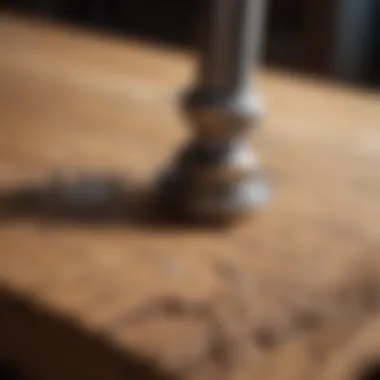
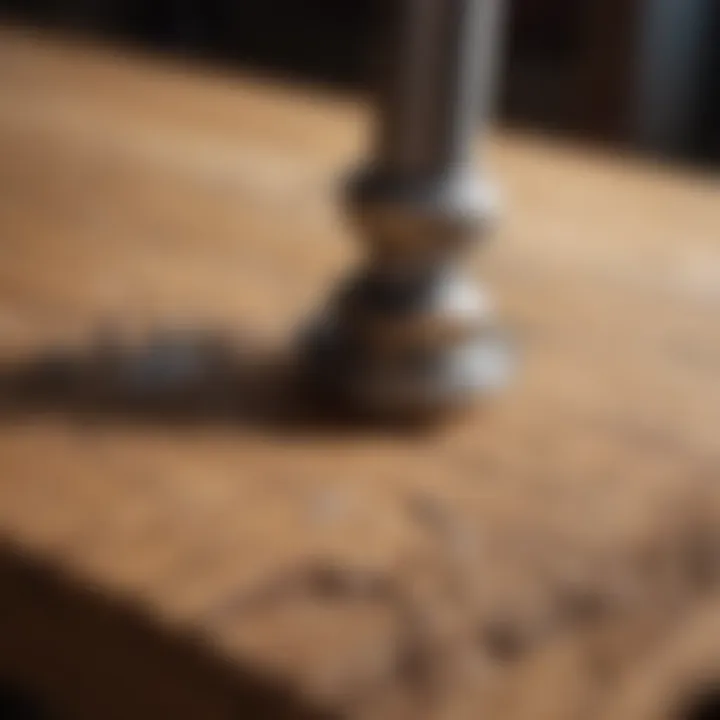
Intro
When tackling home improvement tasks, few things can frustrate a homeowner as much as a broken screw. It's one of those pesky little problems that can derail an entire project. You’re knee-deep in assembling furniture or fixing a leaky faucet when suddenly a screw snaps off. The plans you meticulously laid out now feel precarious, and it seems like a simple solution might not be so simple after all.
Understanding how to effectively remove a broken screw not only saves time but also restores your calm in situations that can easily lead to exasperation. Negotiating around these situations requires both skill and some handy tools, so let’s dive into the specifics.
Overview of Topic
Explanation of the Specific Topic
When we talk about extracting broken screws, we delve into a niche yet significant aspect of the home improvement landscape. This is a common dilemma that many homeowners encounter whether during routine maintenance, renovation, or while assembling new products. From metal to wood, a screw can break off, leaving a fragment embedded and stubbornly refusing to budge.
Importance of the Topic
Understanding various extraction methods is crucial. Not only does it save your sanity, but it can also prevent further damage to the materials and fixtures involved. Being equipped with the right knowledge allows homeowners and DIY enthusiasts to handle such situations independently, avoiding the need for professional help which can sometimes be an unnecessary expense.
Common Challenges and Solutions
Common Issues Faced by Homeowners
Some issues that arise when dealing with broken screws include:
- Fragment Embedded Deeply: Sometimes the screw breaks so deep that it feels impossible to grip or extract.
- Rust and Decay: For screws that have been in place for years, rust can complicate extraction significantly.
- Counter-Sinking: In some cases, the screw is sunk deeper into the material, making it hard to find a tool that can grasp it.
Solutions and Tips to Overcome These Challenges
- Utilize Extractors: There are special screw extractor kits designed to grab broken pieces and twist them out smoothly.
- Drilling Techniques: In some situations, carefully drilling into the center of the broken screw can facilitate its removal.
- Applying Heat: Heat can expand the surrounding material, making it easier to extract a rust-bound screw.
- Lubrication: Using penetrating oil can ease the extraction process, especially with rusted screws.
Product Recommendations
Detailed Analysis of Top Industry Brand Products
Some of the most effective tools on the market include:
- Irwin Hanson Extractor Set: Regarded as a leading tool for broken screws, this set provides various extractor sizes, making it versatile for different applications.
- Grabit Pro Extractor Set: Known for its efficiency in retrieving broken screws, this tool allows for easy extraction without extensive drilling.
- DeWalt 10-Piece Screw Extractor Set: This option features various extractor bits designed to handle both broken screws and damaged fasteners, showcasing durability.
Benefits and Features of Recommended Products
Choosing the right tools can enhance your chances of success. The Irwin Hanson Extractor is especially popular for its ergonomic grip and ease of use. The Grabit Pro Set stands out for its unique design that tackles complicated situations, while the DeWalt set offers a comprehensive solution for various extraction challenges. These tools are built to endure, saving you from future frustrations.
Step-by-Step Guides
Practical Steps to Extracting Broken Screws
- Assess the Situation: Inspect how deep the screw is broken, determining which method to employ.
- Gather Your Tools: Ensure you have the recommended products handy, such as extractors or a drill.
- Apply Lubrication: If the screw is rusted, apply a penetrating oil and let it sit for at least 10-15 minutes.
- Select the Right Extractor: Choose the appropriate size from your extractor set.
- Drill a Pilot Hole (if needed): If the screw is broken deep, using a drill to create a pilot hole is essential.
- Insert the Extractor: Carefully insert the extractor into the pilot hole or directly into the broken screw if it’s accessible.
- Turn Gently: Start turning the extractor counter-clockwise until the screw begins to move. Be cautious not to apply too much pressure to avoid further breaking it.
- Remove the Screw: Once you feel it loosening, gently remove the screw with pliers or the extractor’s handle.
- Enjoy the Result: After extraction, you can now proceed with your project feeling accomplished and ready to take on more challenges.
"The right tools can make all the difference between a nightmare and a bedtime story."
By following these steps and utilizing the recommended tools, you’ll be well-equipped to tackle broken screws like a seasoned pro. Stand tall amidst the challenges of home improvement, knowing that with the correct approach, no broken screw shall keep you from success.
Understanding Broken Screws
When it comes to fixing things at home, encountering a broken screw can feel like running into a brick wall. It's the kind of snag that can derail a project, causing frustration and possibly even a minor meltdown. Understanding broken screws is more than just dealing with a frustrating nuisance; it is the first step towards effectively resolving the situation. Grasping what leads to screws breaking can offer insights into how to prevent this issue in the future and what methods may be the most effective for extraction.
By recognizing the common scenarios that lead to screw breakage, one can approach such situations with a mindset that’s both calming and methodical. This understanding not only contributes to smoother repairs, but it also empowers individuals to ensure longevity and reliability in their projects. Knowing how to identify the types of broken screws also plays a crucial role as it informs the choice of tools and methods to employ during extraction.
Common Causes of Broken Screws
Screws tend to break for a variety of reasons, each revealing a telltale sign when something goes amiss. Here are some frequent culprits:
- Over-tightening: Sometimes, in an effort to secure items, people tighten screws too much, which serves to stress the metal and can result in snapping. It's like trying to fit a square peg in a round hole; you might force it, but the outcome is rarely good.
- Low-quality screws: Opting for cheaper screws might save a few bucks in the moment, but they often lack the strength and durability needed for the task at hand. Think of them as the flimsy paper towels that rip with the slightest effort—they just can't stand up to pressure.
- Corrosion: Rust can work its way into metal parts over time, leading to weakening. If a screw is exposed to moisture or chemicals, it can deteriorate, making it quite brittle. It’s like watching a reliable friend lose their strength due to relentless burdens.
- Wrong tools: Using the incorrect driver or tool can strip screw heads and lead to breakage. It's crucial to match the right tool to the job, just as you wouldn’t use a spoon to cut through a steak.
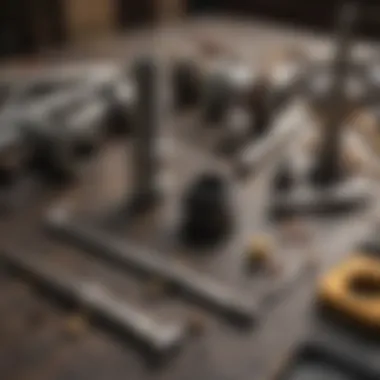
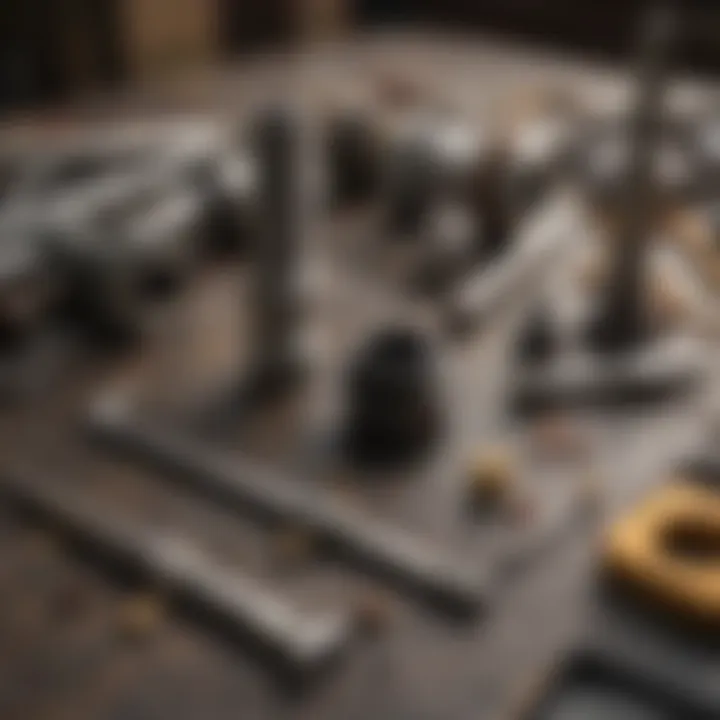
Awareness of these factors not only helps in the immediate situation but also aids in preventing future mishaps. It becomes clear that approaching projects with a considerate mindset and using the right equipment will generally yield better results.
Identifying Types of Broken Screws
Not all broken screws are created equal. Different types present unique challenges that require tailored strategies for extraction. Recognizing the type of break can guide the approach you take:
- Sheared screws: These might break off flush with the surface, making it difficult to grip them with traditional pliers.
- Stripped screws: Often, the head of the screw is rounded out, rendering any standard screwdriver ineffective. Flipping over the screw can sometimes reveal a type of head that was unforeseen, like a surprise twist in a story.
- Bent screws: In certain settings, a screw can bend before breaking. This often indicates that the screw was not aligned properly or that it faced undue pressure during installation.
Identifying these various types makes a world of difference when you're in the heat of the moment. With a good eye for detail, you can assess the situation and craft a plan of attack tailored to what you're facing.
Ultimately, this knowledge is your ally. Arm yourself with an understanding of broken screws, their causes, and their types, and you'll be much better prepared to tackle the challenge head-on. Remember, preparation is half the battle.
Assessing the Situation
Understanding the situation before trying to extract a broken screw is crucial to ensuring a successful resolution. Rushing in without a clear assessment can lead to further complications, including damage to both the screw and the surrounding material. By taking the time to evaluate the conditions and specific characteristics of the broken screw, you set yourself up for a smoother extraction process.
Evaluating Screw Condition
Before diving into extraction methods, it’s important to take a good look at the broken screw itself. Its condition will dictate the approach you ultimately choose. For instance, if the screw has broken just below the surface, this might lend itself to different techniques compared to a screw that has snapped off flush with the material.
Here are some factors to consider:
- Type of Break: Is the screw twisted, or did it shear off cleanly? A twisted break might suggest it’s wedged in tightly, while a clean break could indicate that it might come out easier with the right tools.
- Depth of the Break: If the screw is recessed deep within its hole, this will often require specialized extraction tools. If it’s just slightly embedded, you may be able to grab it with pliers.
- Material of the Screw: Steel screws behave differently than brass or plastic ones. Softer materials may deform under extreme pressure, while harder materials might be more resistant to removal.
Assessing these conditions allows you to choose the right extraction technique and can potentially save you time and effort.
Determining Surrounding Material
Just as important as the screw itself is the material surrounding it. Knowing what you're working with can help you avoid unintentional damage during the extraction process. If the screw is set in wood, metal, or plastic, each demands a different extraction approach.
Consider these points:
- Material Properties: Wood can split or crack if stressed too much, while metal can require more aggressive techniques such as drilling. Know your terrain!
- Thickness and Integrity: Thicker materials may handle stronger extraction techniques. Conversely, fragile materials require a gentle approach to avoid breaking anything else.
- Accessibility: Sometimes, the layout of the surrounding material limits the tools you can use. If a screw is positioned in a tight corner, it will be harder to access.
"Proper assessment is half the battle won. The more you know beforehand, the fewer mistakes you make in extraction."
In short, taking the time to assess the situation thoroughly can set the stage for success in extracting that problematic screw, safeguarding both the basics of your project and the integrity of your workspace.
Necessary Tools for Extraction
When it comes to wresting a broken screw from its stubborn abode, having the right tools is half the battle won. Each tool serves a purpose, and neglecting their significance can lead to further complications instead of the desired solution. Great care in selecting tools not only aids in the extraction process but can ultimately safeguard the integrity of the materials surrounding the broken screw.
Types of Screw Extractors
A screw extractor set offers a lifeline to anyone facing the vexing situation of a broken screw. Essentially, these are specialized tools designed precisely for this task. To utilize a screw extractor effectively, one must select the right size based on the dimensions of the broken screw. The most common types usually fall into the following categories:
- Tapered Extractors: These are aggressive, designed to bite into the screw as you turn it, creating a gripping action. They can handle several sizes, making them versatile but they require careful handling.
- Straight Extractors: Unlike tapered versions, these are more straightforward and easier for beginners to grasp. They simply drill into the screw and then allow for extraction through reverse turning.
- Pneumatic Extractors: More advanced, these tools often require an air compressor. They deliver a high-speed drill and can sometimes eliminate the need for manual effort altogether.
Each type comes with its benefits and drawbacks, depending on the specific nature of the job at hand. For instance, if you find yourself dealing with a difficult or rusted screw, a tapered extractor might yield better results than others.
Drills and Drill Bits
No article about broken screws would be complete without mentioning drills and drill bits. A high-quality drill paired with the correct drill bit can make a world of difference. Remember, not all projects are the same. Here’s what you should know:
- HSS Drill Bits: Made from high-speed steel, these bits are durable and effective in piercing through various materials. They work well for initial drilling into harder screws.
- Cobalt Drill Bits: Known for their heat resistance, these bits are perfect for tough jobs. They can handle high speeds without losing their effectiveness, so they’re a reliable choice when dealing with stubborn screws.
- Carbide-Tipped Bits: For the toughest metal screws, a carbide-tipped bit offers extra durability, allowing for more aggressive drilling without the risk of wear.
When preparing to extract a screw, using the right drill bit size relative to the screw itself is crucial. A gap that’s too large can make extraction more complicated, while one that’s too small might not work at all.
Alternative Tools
Sometimes the conventional route won’t do justice to the situation at hand, especially when barriers arise. In such cases, alternative tools can provide unexpected solutions. Here are a few noteworthy mentions:
- Dremel Tool: For those challenging screws that don’t yield easily, a Dremel can grind away the top of the screw, allowing for a flat surface to grip and turn.
- Left-Handed Drill Bits: While this may raise eyebrows, left-handed drill bits can be surprisingly useful. These bits drill in a counter-clockwise direction; occasionally, the act of drilling can snag the broken screw and pull it right out.
- Vise Grips: If you can extract any part of the screw above the surface, vise grips can do wonders. They can provide a strong grip allowing you to twist and pull effectively.
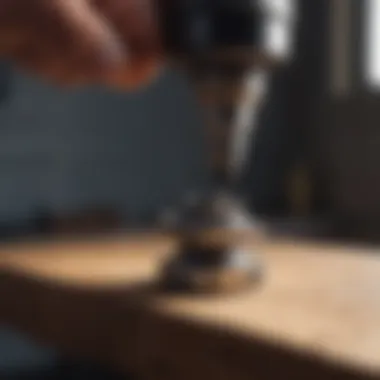
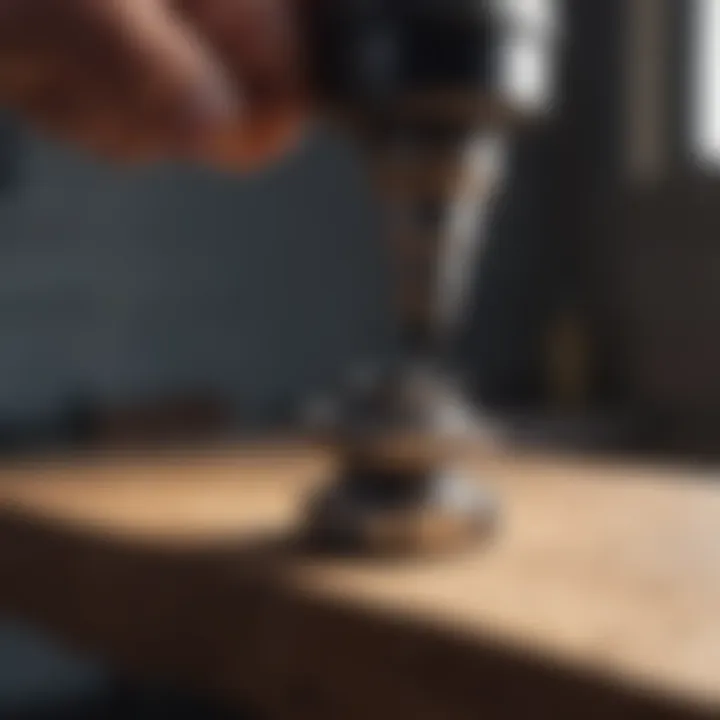
Being prepared with various tools encourages adaptability. This can mean the difference between frustration and success during the extraction process.
"In any project, the right tool can mean the difference between success and failure."
Preparation for Removal
Before diving into the complicated task of extracting a broken screw, it's vital to take a solid approach to preparation. This initial step serves as the backbone of your extraction process. Skipping or rushing through preparation can lead to added frustrations and potential damage, both to the surrounding materials and to your own tools.
The importance lies in two main areas: gathering the right tools and ensuring safety precautions. By focusing on these elements, you set the stage for a smoother extraction experience.
Gathering the Right Tools
A well-equipped toolkit can make all the difference when faced with the challenge of broken screws. Think of tools as your best allies—they should be reliable and ready to tackle the task at hand. Here are a few essential tools to have on hand:
- Screw Extractors: These specialized tools are shaped to grip the remnant of the broken screw securely and rotate it out. They come in various sizes, so a set is a good investment.
- Drill and Drill Bits: A high-quality drill can provide the power needed when extraction techniques require drilling into the screw itself. Make sure to have different sizes of drill bits to accommodate the screw diameter.
- Pliers and Grips: If there's enough screw left protruding, using pliers or locking grips can help in removing the screw by providing leverage.
- Lubricants: Applying a penetrating oil can ease the extraction process. It reduces friction and helps in loosening the broken screw from its embedded seat.
When gathering tools, do not overlook the importance of quality. Cheap tools can break or wear down quickly, leading to more complications. It can often be worth it to spend a little extra if you are working on multiple projects.
Safety Precautions
When crouching down to tackle a broken screw, safety should always come first. Even though it may seem straightforward, the process can involve sharp edges, heavy tools, and small parts flying around. Here are a few steps you should consider:
- Wear Eye Protection: Small shavings or bits of metal can become projectiles when drilling or pulling out a screw. Invest in a good pair of safety goggles to protect your eyes.
- Use Gloves: Keeping your hands protected from cuts and scrapes is essential. A sturdy pair of work gloves provides grip and guards against sharp edges.
- Work in a Clear Area: A cluttered workspace can lead to accidents. Make sure to clear your work area of any unnecessary items before you begin.
- Disconnect Power: If you’re dealing with screws in electric appliances or items, ensure that they are unplugged or turned off to avoid shocks.
"The real secret to solving problems like a broken screw lies not just in tools, but in a well-thought-out preparation strategy that minimizes potential hazards."
Methods of Extracting a Broken Screw
It's important to consider several factors when choosing a method. For instance, the type and material of the screw, the surrounding area, and the tools at your disposal can greatly influence your approach. Furthermore, adopting a sympathetic mindset towards the situation can lead to both efficiency in resolution and preservation of your material integrity.
When executed properly, the extraction of a broken screw can restore your project to its intended state and avoid further complications, ensuring that your hard work doesn’t go to waste.
Using a Screw Extractor
A screw extractor is a specially designed tool created specifically for the purpose of removing broken screws. These extractors are often easy to use, making them a solid choice for many situations. The key lies in their design; screw extractors have reverse threads that grip onto the screw as you turn them counterclockwise. This gripping action allows the extractor to pull the screw out without damaging the surrounding material, which is a significant advantage.
To use it effectively, first, ensure that the broken screw has a clean and accessible head. If needed, drill a small guidance hole into the center of the screw. Select a screw extractor that fits snugly and gently tap it into the hole you created. Eventually, you turn the extractor while applying consistent and even pressure. Patience is essential. If it feels stuck, ease up rather than applying excessive force, or you might complicate the situation further.
Drilling the Screw Out
Drilling can be a last-resort option, but it’s effective when done carefully. The first thing to do is find the right drill bit—one that is slightly smaller than the diameter of the screw itself. This approach lunges into the core of the screw, which enables you to remove it piece by piece.
Before you start drilling, ensure you’re using a drill with adjustable speed settings, as a too-fast drill can lead to further breakage or even damage to the area surrounding the screw. Steady your hands and maintain a perpendicular angle to the surface as you drill. Once you’ve drilled through the center, you might be able to wiggle the remaining pieces out, or alternatively, use a pair of pliers to get a grip on what’s left.
Employing Heat Techniques
Applying heat can sometimes work wonders when dealing with stubborn broken screws. Metal expands when heated, which may loosen the connection between the screw and the material it is fastened to. For this technique, a heat gun or propane torch can work well, but caution is crucial to prevent fire hazards or damaging the object you're working on.
Heat the area surrounding the broken screw for about 30 seconds. Then, let it cool slightly before attempting to turn the screw. Using pliers can help here, as you can grip the screw tighter once heat has been applied. It's important to remember, though, that this method works best on screws that are not rusted in place, so consider your environment before using heat.
Using Pliers and Grips
At times, the old-school method of using pliers should not be overlooked. A pair of needle-nose or vise-grip pliers can be remarkably effective if a portion of the screw is still visible above the surface. If so, try to grip the head of the screw directly with the pliers and turn counterclockwise.
Chemical Solutions
In certain situations, chemical solutions can soften rust or corrosion, making it easier to extract a broken screw. Products such as penetrating oils, like WD-40 or Liquid Wrench, are designed to seep into the threads and break the hold that the rust has on the screw.
To use these, spray the chemical liberally on and around the broken screw and let it sit for anywhere from 15 minutes to several hours, depending on severity. Remain patient! After soaking, attempt to turn the screw with whatever tools are available. Additionally, applying some heat after chemical soaking may yield effective results.
Understanding these various methods equips you with the necessary tools to confront a broken screw confidently. By selecting the right approach based on your situation, you can minimize the risk of damage and expedite the removal process.
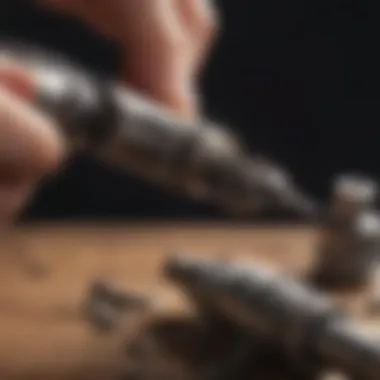
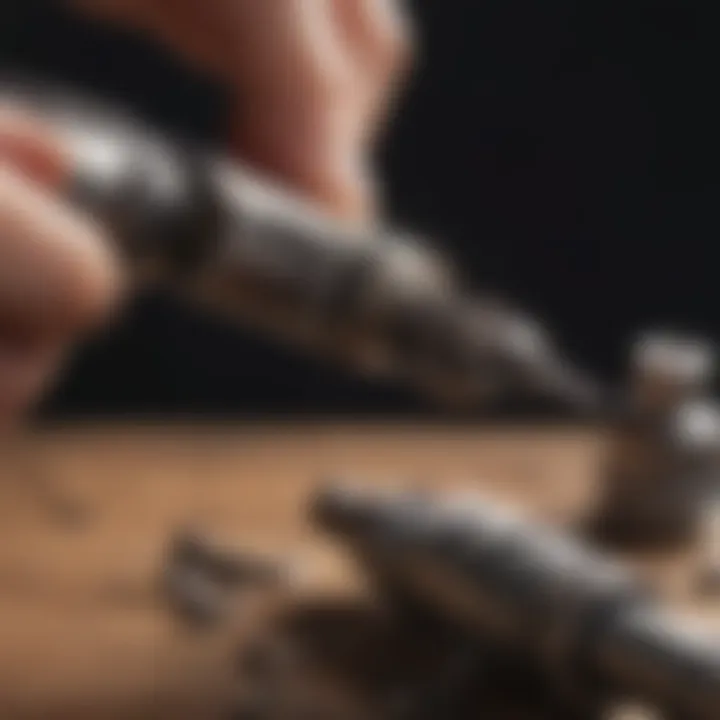
Post-Extraction Steps
Once you have successfully extracted the broken screw, you might think the job is done. However, taking the time to properly follow through with post-extraction steps is crucial to ensure you do not run into complications later down the line. This phase serves multiple purposes, from ensuring the cleanliness of your work area to inspecting the integrity of the surrounding material. Skipping these steps might seem tempting, but it can lead to additional headaches in future projects.
Cleaning the Area
After removing the broken screw, it's essential to clean the area thoroughly. This isn’t just about aesthetics; it’s about functionality. Dirt or debris left in the workspace can cause issues down the road. Check for metal shavings from drilling or residue from any chemical solutions used.
- Wipe down the area using a cloth to remove any grime.
- Use a vacuum to pick up smaller debris that might not be visible at first glance.
- Inspect tools you used for any leftover particles as well.
Take a moment to reflect; a clean workspace not only looks better but also improves your efficiency in future projects.
Inspecting the Material
Inspecting the material surrounding the broken screw is another key step before moving on. You need to ensure that the extraction did not compromise its integrity. This can be particularly important if you’re dealing with delicate materials such as wood or certain plastics.
- Look for cracks or splits that might have formed during the extraction process.
- Use a magnifying tool to get a better view.
- Gently finger along the area to detect any rough edges or imperfections.
If you notice any damage, consider how this might affect your next steps. You may need to take extra precautions when installing a new screw to prevent further issues.
Planning for Replacement
Now comes the final stage: planning for replacement. Knowing how to replace the extracted screw might seem straightforward, but it’s important to consider a few factors that can make or break your next attempt at securing whatever it is you are working on.
- Assess the size and thread of the original screw. Make sure you have an appropriate replacement on hand.
- Consider the material of your replacement screw. Stainless steel might be more suited for outdoor projects, while brass could work well for decorative purposes.
- Visualize how the replacement screw will fit. Sometimes a longer or coarser thread might be more effective, especially if the material is compromised.
In summary, don’t underestimate the power of these post-extraction steps. They can help bolster the longevity and effectiveness of your work, ensuring that the next time you turn a screw, there are no unexpected surprises. As the saying goes, "Measure twice, cut once," but in this case, perhaps it should be "Inspect thoroughly, replace wisely."
"The quality of your work often hinges on the little details, so don’t skip over them."
By investing the effort into these final steps, you set yourself up for future success in your DIY endeavors.
Common Mistakes to Avoid
When it comes to tackling the issue of a broken screw, it's crucial to know what to steer clear of. Understanding common mistakes helps not only in the extraction process but also in preventing future issues. This section dives into specific oversights that can lead to headaches down the line. Avoiding these pitfalls not only saves time but also minimizes damage to the surrounding materials.
Over-tightening Screws
One of the most prevalent mistakes is over-tightening screws, especially when initially installing them. This can create significant tension, leading to breakage when you eventually attempt removal. When you tighten a screw to the max, you’re not just snugging it in place; you’re adding unnecessary stress that can cause the screw to snap. Think about it this way: if you’re trying to screw in a corkscrew too hard, it’s bound to break, right?
So, what can you do to avoid this?
- Keep it gentle: Apply a firm but not excessive amount of force. Use a torque screwdriver if possible, as it can prevent you from ramping up too much pressure.
- Choose the right screw: Using a screw suited for the material you’re working with can make all the difference.
- Use lubricants: A little bit of grease or oil can lessen friction and avoid that jamming feeling, making the screw less prone to breaking.
Being mindful during the installation process can save you from the heartache of dealing with a broken screw later on.
Incorrect Tool Usage
Another major blunder in screw extraction is using the wrong tools for the job. It sounds simple, but grab the wrong wrench or bit, and you might as well be throwing darts blindfolded. Each screw type has its own specific tools that work best for extraction. Using the right tool not only makes the project easier but also reduces damage risk both to the screw and to the material.
Here’s how you can avoid this trap:
- Know your tools: Familiarize yourself with different extractor sets; some work better with specific sizes and types of screwheads. For example, reverse spiral extractors are ideal for screws that are embedded deep into wood, while larger models might fit better for metal screws.
- Assess the situation: Take a good look at the screw before attempting removal. If it’s stripped or broken, using a standard screwdriver will only worsen the situation.
- Use additional grips: Sometimes, getting a better grip on the screw can lead to successful removal. Pliers or locking grips can assist greatly, so have those handy.
Understanding these nuances will not only facilitate the extraction process but also provide a smoother experience overall. By staying aware of these common mistakes, you pave the way for a successful resolution to the irritating problem of broken screws.
The End
In this article, we explored the multifaceted challenge of extracting broken screws, a task that can be as frustrating as trying to push a square peg into a round hole. Mastering the techniques laid out here not only saves time but also prevents further damage, which can be quite the wallet drainer. It's essential to recognize that broken screws, while pesky, can be managed effectively with the right methods and tools.
Summarizing Extraction Techniques
To wrap it all up, let’s distill the core techniques discussed:
- Using a Screw Extractor: This tool stands as the knight in shining armor when it comes to broken screws, specifically designed to wrench the troublesome remnants from surfaces.
- Drilling the Screw Out: A method that, although daunting, can be incredibly effective when precision is employed. The key here is to start with a smaller drill bit before transitioning to a larger size, ensuring a manageable extraction process.
- Employing Heat Techniques: Applying heat can expand the metal, making removal a tad easier. A heat gun or even a soldering iron can come in handy here, but must be used with caution.
- Using Pliers and Grips: Often overlooked, sometimes all you need is a good grip to twist the screw out. This tends to work well if part of the screw is still exposed.
- Chemical Solutions: In certain cases, a penetrating oil can work wonders, making the bond between the screw and material less tenacious.
Each method has its own utility, suited to different scenarios depending on the context and materials involved. Failing to choose the right extraction technique might lead you down a rabbit hole of further complications, making it vital to analyze each situation thoughtfully.
Ultimately, this journey through the world of broken screws encourages a proactive mindset. With the acquisition of the right knowledge and tools, anyone can take charge of this common household nuisance. Don't let a little metal ruin your day; instead, roll up those sleeves and apply the effective strategies shared herein.







